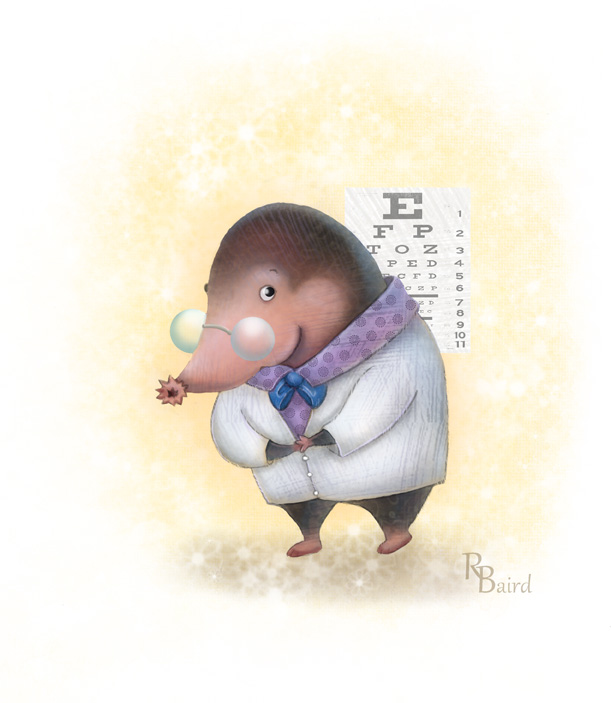Another good prompt for warm-up drawings. Have a good Monday, everyone. : )
Another good prompt for warm-up drawings. Have a good Monday, everyone. : )
 “To see what’s under one’s nose needs a constant struggle.”
“To see what’s under one’s nose needs a constant struggle.”
~George Orwell
One of several ideas that popped in my head for this weeks Illustration Friday prompt, “Sight”. Check out the site (Ha ha!) and see the many other illustrations!
Well, yes, sort of. Dogs see colors, but their span of color vision closely resembles the array of colors seen by “color blind” males.
About 8%, or 1 out of 12 males (humans) and about 1 out of 200 females are “color blind.” We use that term to describe individuals that are color deficient, but they are not truly color blind. The eye has cells that perceive color and these are called cone photoreceptors or “cones.” We use another set of photoreceptors called “rods” for the black and white vision of dim light or nighttime. Our cones contain three visual pigments each of which responds to a different spectrum of wavelengths of light. It is these three visual pigments that combine their signals to permit us to have color vision by blending the signals, depending on the wavelengths received. Although it is an over-simplification, and misleading to some extent, we can describe our visual pigments as blue, green, and red. The brain receives the input from these three channels and then interprets the color we see. At least two different color channels are needed for color vision because the brain needs to “compare” these two different channels to determine color.
Color blindness in humans is caused by the genetic deficiency or loss of either the green or the red photopigment hence that input into the brain. So, the brain learns to see only those colors that can be interpreted or constructed by combining the input from the other two remaining visual pigments. The result is a less robust spectrum of colors, but colors are still seen. True color blindness in humans does exist when two of the three visual pigments are genetically unavailable, but it is exceedingly rare. If only one visual pigment channel is coming to the brain, say the blue cone input, it isn’t seen as blue but rather as on or off—hence that is “real” color blindness and would be a black and white world.
So, almost all color blindness in humans is not true color blindness but would be better described as color deficiency.
Now, let’s go back to your dog. Normal dogs have two different visual pigments in their cones, and much like humans afflicted with so-called “color blindness.” But they would see color. The color input would be weaker to some extent because dogs have fewer cones than we do because they are evolutionarily closer to their nocturnal ancestors. Cones are needed less, if at all, at night.
So, what about the other pets in the household? Your cat will have a similar color distribution as your dog although there are some subtle differences.
Birds, on the other hand, possess rich color vision, in many cases better than our own. Most birds have four cone visual pigments, although this varies. In general, birds have an additional ultraviolet pigment in their cones and many more cones than we have. Furthermore the visual pigments that would be similar to ours span different wavelengths. Their visual experience is richer than our own in ways impossible to describe or understand. Not o

What color is my cat ?
What color is the butterfly ?
What color is the snow ?
Orange, gray, yellow, white ?
I say no, it’s no I say !
They are the color of the universe, strands of thread sewn in a tapestry, woven like a weaver with a masters hands .
The color of their weaving we may never truly understand but in the instant of our leaving.
